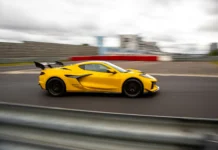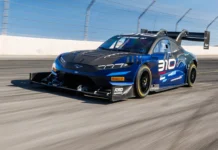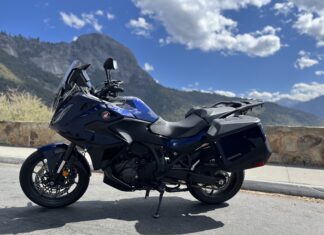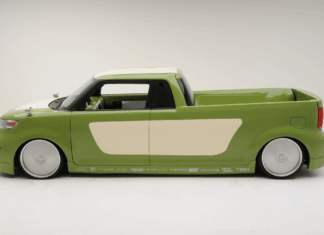
What a fantastic time Sabrina and I had at the Gazelle Rally this year! Officially we came in 29th out of 162 teams, smashing last year’s finish of 70th. We couldn’t be happier!
Some of you may still be a little confused about the format of the Gazelle Rally, as it’s not like any other rally out there. The roadbook consists of map coordinates and the goal is to travel in as straight a line as possible between those coordinates. Speed, while a factor in managing your time, is not the focus. Each day the total straight line distance could be anywhere from 150-200 kilometers spread out between 5-7 checkpoints.
Any distance we traveled over the daily straight line distance was our penalty. If we missed a checkpoint, we also received a penalty. Penalties could also be incurred by not taking the most difficult route through the dunes or by calling for mechanical help.
We missed three checkpoints for the entire rally and were penalized for taking the medium difficulty dunes route on the first day in Merzouga. Our total penalties added up to 522.06. In contrast, the winners were assessed a total of 59.24.

Our goal was to reach as many checkpoints as possible, so we took a “road” whenever we could, even if it added distance. This allowed us more time to get all our checkpoints as we could go faster. Checkpoints were usually worth 60 points, so taking a 5 km penalty for the route in order to not get the 60 km penalty for the checkpoint was a good trade.
Days started with a 4am wake-up call, a 5am briefing, and a 6am start time. In the evening, navigator Sabrina filed all our paperwork for the day and set up camp while I got our Resque me truck, an Isuzu D-Max, fueled up and over to the mechanics for any repairs.
Things started a bit rough on day one when we found ourselves in the dark before we could get to the last checkpoint. Navigating in the dark is next to impossible so we decided to head back to the bivouac. All we knew was that we had to keep the big dunes of Merzouga to our left, which we could vaguely make out in the moonlight, until it started to rain. A Beduin man assured us the bivouac was just on the other side of a wash, and then the wind started to blow. We could just make out the lights of the bivouac when we entered a field of camel grass.
Camel grass is made up of mounds of soft dirt, often as tall as the truck doors, with long, sharp grass growing out the top. One must pick a line carefully and put one wheel up on the camel grass and kind of surf through the stuff. Things can quickly turn bad if it grows too close together, becoming impossible to get through. I brought a small light bar this year which helped with visibility, but honestly it was raining and windy so I really couldn’t see anything.

We crossed through maybe a kilometer of camel grass only to encounter dunes! Not large dunes, but still dunes. My tires were not aired down but I could see the faint glow of the bivouac, so I just put it in 4Low and prayed. We surfed through another kilometer of dunes, only to come out on a plain where the wind really kicked up and we couldn’t see more than 2 feet in front of us. Even the lights of the bivouac, now a half a kilometer away, were obscured. We sat for 10 minutes until we got a break, scooted into the bivouac, and threw ourselves into our tents, exhausted.
After missing two checkpoints on day 2, we finally found our groove on day 3. We got through the dunes of Merzouga quickly and with only two stucks, which our Maxtrax handled easily. Sabrina was dead on in her navigation that day, even though we decided to take a few roads. You’d think taking a road would be easy, but remember, these are basically tracks in the dirt. No pavement, no kilometer markings. To complicate matters, we were doing all this with just the odometer and with larger tires. It’s not exactly accurate. We had calibrated our odometer at the beginning of the rally, so we had what is called the cal factor, or the difference between the actual distance and the distance on the odometer. So if Sabrina measured 20 kms to the next CP, I multiplied that by 1.0292 to get the reading for the odometer. Of course, if I was calling out kilometers, we would have to divide by 1.0292 to get the actual distance.

We had no other problems until the second marathon leg. These are the legs where you are required to spend the night out in the desert. There is no bivouac for the night. We wanted to sleep at checkpoint 7 so we could get into the difficult Erg Chebbi dunes by 6:30 the next morning. We plotted CP 7 on our map, just above a wash where it made a horseshoe bend at about 24kms. We clicked off the kms, 22…23…24…no horseshoe bend. The maps are from the 1950s and obviously the feature had changed. We ended up camping a few kilometers southwest of CP 7 with three Canadian teams. We still had to find CP 7 the next morning, which put us in the dunes around 8:30am. Not a good thing.
We got stuck pretty badly on a 45 degree angle. We were far from tipping over but it looked dicey. An hour later we were dug out, but then had to get out of the bottom of the huge bowl. Traction was fine at the bottom but towards the lip of the dune it was fairly soft. We put our Maxtrax on the soft stuff, I gunned it in second gear in 4Low, aimed my tires for the Maxtrax, and we easily popped right out.

The rest of the morning was spent with Sabrina scouting and telling me where to drive. The dunes are big and steep but after awhile I forgot that I could die at any moment and just enjoyed the thrill that came with conquering them. We were out of the dunes by 1pm and aside from losing our heading in a windstorm, the rest of the day was great.
The last day was pretty cool as our route took us through some beautiful valleys and canyons. It’s impossible to describe and photos do not do the terrain justice. In fact, all we could do was get out of the truck and sing every last word to The Hills Are Alive from The Sound of Music. I’m sure the truck coming up on us thought we were batpoop crazy, but it was just so amazing and we had no other way to acknowledge and enjoy it.
This year’s rally was completely different for us. We were back to the bivouac earlier most days, which meant we could shower more, eat more, sleep more…hell we even went to the bar! This made the rally more fun and we were less stressed in the car. Sabrina improved so much in her navigation. She could read the features and keep me on a heading. She always knew exactly where we were on the map. Exactly.
I got better as a driver as well. I finally understood that the Gazelle Rally isn’t about speed. Sure, it was nice to come into a checkpoint first, but usually that meant we had taken an easy road. I rarely had the car out of second gear unless we were on a road. There are just too many unknowns. Big rocks, little rocks, sharp rocks, round rocks, square rocks, rectangular rocks, dirt, sand, silt, camel grass, dunes, big washes, small washes, giant craters that looked like the moon, weird little bushes that looked like cauliflower and would bend your wheel without even trying, plateaus, box canyons, mountain passes, camels, donkeys, kids, dogs…I drove through it all. We didn’t have any mechanical issues and no flats on the rally, just one in essentially a parking lot the morning after we finished.

The first year we did the Gazelle Rally, I was completely out of my comfort zone. Everything was crazy difficult and stressful. This year things were more relaxed and while it was not completely stress-free, we both felt much more comfortable with our choices. My question is, what happens next year? What happens when we return to Morocco and find that dead reckoning navigation through the desert has become the norm? What happens when being outside the comfort zone becomes the comfort zone?
Watch this video of a Jeep Wrangler SRT 6.4L Hemi crushing a hill of rocks…
 Emme is a driver, reviewer, and rabble rouser. She is the principle driver and trophy winner for the Mega Monkey Motorsports™ 2 seat 1600 desert racer, powered by an air-cooled VW engine and has also been on the podium in a stock bug, a trophy bug, and an ultra-4. She is one of only 13 American women to have participated in the Rallye Aicha des Gazelles, a 9 day all female off road rally in Morocco with no GPS. You can check her out online on Facebook, Twitter, Instagram, and either one of her blogs
Emme is a driver, reviewer, and rabble rouser. She is the principle driver and trophy winner for the Mega Monkey Motorsports™ 2 seat 1600 desert racer, powered by an air-cooled VW engine and has also been on the podium in a stock bug, a trophy bug, and an ultra-4. She is one of only 13 American women to have participated in the Rallye Aicha des Gazelles, a 9 day all female off road rally in Morocco with no GPS. You can check her out online on Facebook, Twitter, Instagram, and either one of her blogs

























